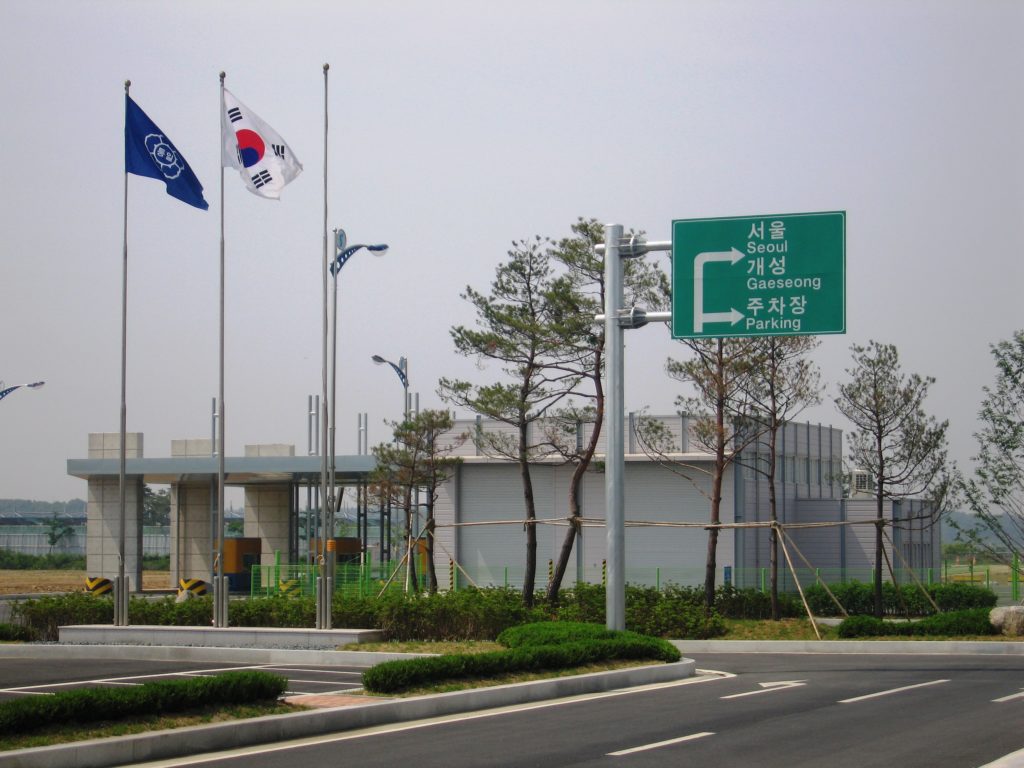The Peninsula
Kaesong Picking Back Up

By Troy Stangarone
Despite the financial crisis of 2008, the global downturn that followed in 2009, and a year of tension between North and South Korea, the Kaesong Industrial Complex has been remarkably resilient. New numbers from the Ministry of Unification show that production at the complex was up 38 percent in September from a year earlier to $36.8 million, setting a new monthly high. The number North Koreans working in Kaesong’s 123 factories also set a new high of 48,242, up 8.4 percent from a year ago.
The growth at Kaesong is interesting in light of the challenges of recent years. After the Cheonan was sunk, South Korea implemented a series of sanctions against North Korea. New investments in the Kaesong complex were prohibited and ongoing expansions were halted. While some of the restriction on investment have recently been lifted, they would be unlikely to account for the increase in production over the last year. At the same time, visits to Kaesong by South Koreans were limited to essential personnel.
The continued growth of Kaesong is also bucking recent global economic trends. While South Korean trade as a whole was down 20 percent in 2009 from the global economic recession, trade with North Korea through Kaesong has continued to grow. Inter-Korean trade from Kaesong was up 7.9 percent in 2009 and 48.9 percent in 2010 despite North Korea’s provocations. Through the first half of this year it is up 19.5 percent from last year and a significant 135.8 percent since 2009.
As we approach 2012, a symbolically important year for North Korea, production growth at Kaesong is likely to continue. South Korea is working to improve road access from Kaesong to the industrial complex and providing additional buses to transport workers from their homes. Additionally, after removing the restriction on construction in the complex, South Korea is moving ahead with the construction of a fire station, medical facility, and resuming construction on facilities for seven companies that had already received permits, including three metal and machinery plants, three textile factories, and one electronics factory.
However, while trade has been up, and the increase in workers and wages means North Korea will earn more from the complex, below the surface the picture is less robust. An increasing number of firms are facing bankruptcy, and at the end of August 40 firms wrote to the government to request a grace period for their debts.
Despite being enticed to Kaesong with some combination of low interest loans, preferential tax rates, political risk insurance, and state subsidies, the political risk has clearly taken its toll on some firms in the complex. Even prior to the sinking of the Cheonan, it was unclear how profitable firms were in Kaesong, and the sanctions from May 24 likely only increased losses for firms that saw a halt to the importation of needed equipment, continued construction, or a decrease in orders. While some firms have suffered from the sanctions, the complex as a whole has sought to increase the supply of North Korean labor to boost production. These two factors likely explain why production has significantly increased as more firms face financial difficulties.
Troy Stangarone is the Senior Director of Congressional Affairs and Trade at the Korea Economic Institute. The views expressed here are his own.
